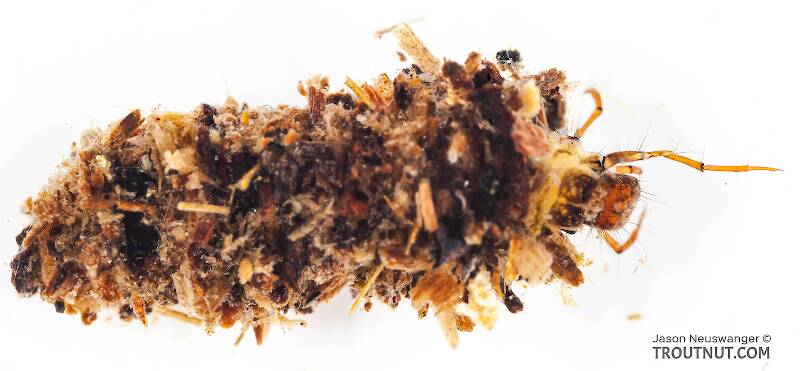
Blue-winged Olives
Baetis
Tiny Baetis mayflies are perhaps the most commonly encountered and imitated by anglers on all American trout streams due to their great abundance, widespread distribution, and trout-friendly emergence habits.
Featured on the forum


Troutnut is a project started in 2003 by salmonid ecologist Jason "Troutnut" Neuswanger to help anglers and
fly tyers unabashedly embrace the entomological side of the sport. Learn more about Troutnut or
support the project for an enhanced experience here.

This one got a little bit damaged in the abdomen when I extracted it from its case. That's a delicate job.
DMM
Posts: 34
Posts: 34
DMM on May 18, 2007May 18th, 2007, 4:42 pm EDT
It may be Lepidostoma. It appears to be lacking a dorsal hump, and the genus is quite large. The cases can be highly variable and can be made of sand or organic materials.
David
Creno on Dec 22, 2007December 22nd, 2007, 10:26 am EST
the case and legs support your conclusion that this is lepidostomatid. A limnephilid would have a different arrangement of the setae/spines on the legs.

